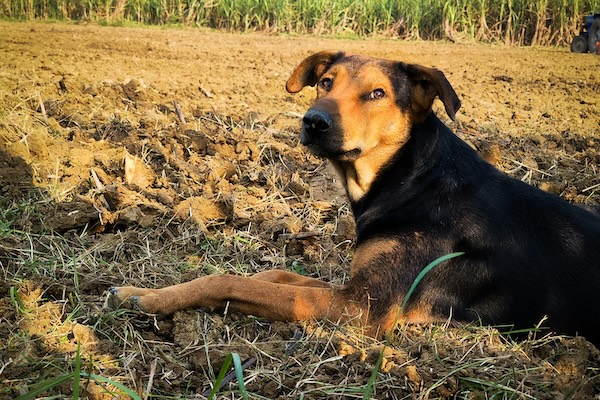Published on the 10/07/2025 | Written by Heather Wright

Shit in, shit out, and more automation, less features…
Shit in, shit out is a key concern for farmers around technology, while ‘more automation, less features’ are a key desire.
That’s according to Tom Lee, senior lecturer at University of Technology’s faculty of design and society.
He told iStart there’s a misconception that innovation happens in the research institutes or big corporations where technology is developed, and it’s then a straightforward process of implementing that innovative technology on the farm.
“If the data going into a model is unreliable or overly abstract, then the outputs will be shaped by those errors,”
“That’s a misrepresentation. There is a heap of innovation going on at the implementation stage. Even if old technologies are being used, or as new technologies are being rolled out, there is a huge amount of necessary innovation happening in the implementation side on farms.
“The changes that happen in that process aren’t deviations from some perfect idea cooked up elsewhere. They are necessary and important changes made through practices.”
Lee is part of a team who interviewed dozens of farmers about AI and digital technology, finding they had a ‘sophisticated’ understanding of their own needs and how technology might help, along with a keen wariness of the utopian promises touted by many tech companies.
“If something is a nice to have, rather than solving an immediate problem or delivering value in a really tangible way, early on, farmers are probably not going to prioritise it,” Lee told iStart.
The research found two dominant themes – the old garbage in, garbage out adage, changed in farming parlance to shit in, shit out, and the idea of having more automation, with less features.
While there’s plenty of talk about AI and machine learning providing farmers with useful predictions – such as how much grass they’re going to have in their paddocks in a month’s time, or the weight gain of their animals – that’s reliant on good data going into the modelling that provides the prediction.
And that, Lee says, is where things often fall down.
“At this stage, a lot of time the data can be either pretty high level with regard to the on-the-ground specifics of the farm, particularly if the farm isn’t homogenous in terms of its pastures and animals.”
While modelling for a simple system – one with homogenous pastures and a single type of animal for a single purpose – might be easy enough, most farms across Australia and New Zealand are more complex, leaving the technology floundering and, worse, making the wrong assumptions.
Data entry errors further compound the problems, Lee notes, and farmers expressed wariness in trusting systems using those records.
“If the data going into a model is unreliable or overly abstract, then the outputs will be shaped by those errors,” he says.
For many farmers, that was a real concern. They felt they couldn’t trust new technologies if they didn’t understand what knowledge and information they had been built with.
“Taking a techno-optimistic view, if the models get better and better, like they can do, and are refined over time and automated around taking pasture assessments or weighing animals without the need for humans entering the data – another key thing we heard from farmers with the more automation, less features – that’s something farmers are quite keen on.”
He notes the use of field scales which predict animal weight when animals are feeding, based just on having the front legs on the scales.
“Farmers are in general getting behind that idea and in general getting a lot of value from it,” he says. But at the same time, the high variability and fluctuating weights have alarmed some.
“They might only weigh four times a year, or even once a year normally. So weighing all the time you might get spooked by the high level of variance in the system, but actually, it’s ok – it’s how animals work and things sort themselves out.
“When it comes to understanding how to interpret the measurements and what they actually mean for your farm, that’s something humans are always going to have to do [rather than leaving to technology].”
The complexity which makes accurate modelling a challenge also gives rise to challenges in automation, with Lee noting the more complex a system, the harder it is to automate.
He points to the success of digital twins in closed – albeit still complex – systems such as car manufacturing plants.
“Compared to a grassland farm in a variable climate, they are different in kind, rather than different in degrees, so just because you can have success in one context, doesn’t mean you’ll have success in the other context.”
Research shows simple heuristics perform better in highly complex models within complex systems, he says. A computer might whip a human when it comes to a game of chess, but when you increase the complexity of the system – such as making predictions about animal weight in a complex pasture ecology – then a simple human heuristic can perform as well, if not better than the complex model, he says.
“And it has the advantage of being transparent to the user as well – you can understand the reasoning behind them rather than them being black boxed.”
That’s something Lee says farmers are keen on. They envisage a digital offering that fits with their image of a useful technology: Transparent in its operations, and a reliable replacement for, or an addition to, human labour.
Farmers do, however have an appetite for technology – or at least labour saving technologies.
Lee says the perception sometimes bandied about of farmers being backward or not modernising enough is not warranted at all.
“That view comes from a really limited definition of what a technology is and what farmers need in order to run a successful farming business.”
He notes that fences, windmills and even the good old sheepdog are crucial parts of the technological narrative of farming, and while they’re not autonomous in a digital way, they offer similar advantages to farmers.
And, feeding into that demand for ‘more automation, less features’ they have a simplicity and clarity of purpose, rather than being ‘everything apps’ promising the world.
“There is never going to be a technology, despite what the promises are when the technology is emerging or even commercialised, that is perfect for all environments and that doesn’t bring new problems.”
And that innovation happening at implementation stage? That’s the gold, Lee says.
“It’s really critical to the way we understand innovation and technology, particularly on farms where there is a whole heap of innovation going on in the implementation stages because of the complexities of farms.”
He admits he spends a lot of time trying to cook up ideas about how to harness the lessons of innovation from farm implementations and disseminating it more widely.
“Globally there are research institutes that connect up farmers and get them sharing ideas they might have implemented as well as problems they’re seeking to solve, connecting them with relevant experts in different design and technology fields to work together.
“If you want to lift the productivity of the ag industry and get farmers to innovate more, that’s where you should focus your energies from a policies and funding perspective, for sure.”



























